LOOKING FOR A PREVIOUS STORY? CHECK THE
ARCHIVE.
Texas-Size Stakes:
Austin Lands Samsung's
$4-Billion Fab
Austin Lands Samsung's
$4-Billion Fab
Capital City Finally Rakes in Korean Giant's Coveted Chips.
| T |
he smoke's starting to settle a bit now on Samsung Electronics' massive site-selection shot heard 'round the high-tech world: That welcome blast landed in Austin, Texas, where the world's second-largest computer chip maker has decided to build a new 300-mm. wafer fabrication
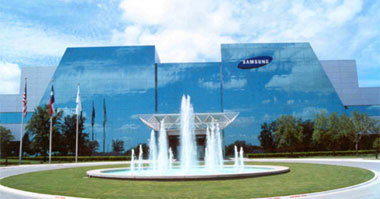 |
| Samsung Austin Semiconductor. |
The South Korean company unveiled that billion-dollar news on April 13th in supremely understated fashion; Samsung's official release from its Seoul headquarters only consisted of four pithy paragraphs. The project's significance, though, was unmistakable. The new fab's eye-popping price tag, for example, may run as high US$4 billion, company officials are saying. That, Texas officials believe, qualifies as the largest investment a foreign company has ever made in a U.S. plant. (Samsung's Austin project is also covered in depth in the new May Site Selection's "North American Reports.")
Ostensibly, at least, the Seoul-based company's site choice seemed to contradict several widely held notions that often pass for conventional site-selection wisdom.
Speed, for example, is often critical in getting new facilities online, particularly high-tech operations. Samsung, however, definitely didn't go with the locale offering the fastest project approval. After its January 2005 announcement of the fab project, the company seemed unshakably focused on carefully choosing the optimal location. Samsung, for instance, worked with Austin officials alone for 16 months.
The chip powerhouse's $4-billion decision also didn't follow the incentive-driven script demonstrated in some other big-ticket projects. Yes, subsidies were clearly a significant consideration. After all, Samsung is getting incentives of $233.4 million in Austin. Another state, though, offered more than twice that total.
Alone, that dramatic financial discrepancy would seem to make for
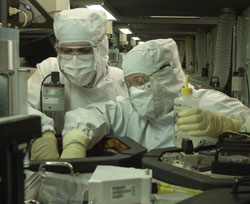 |
| 1,250 workers are employed at Samsung's existing Austin fab. |
'One Plus One Could Equal Three'
What that existing facility meant was that the Texas site could potentially win far more than another project. "With [Samsung's] footprint here," said Phil Taylor, deputy chief of staff for Texas Gov. Rick Perry, "one plus one equals three."
But a radically different equation faced the Austin site if the 300-mm. project went elsewhere. In that site-selection math, adding nothing to the one existing Austin fab would've equaled … nothing.
"If they left this single fab sitting here in the U.S., it would reach its end of life at some point and become less and less viable," explains Bill Cryer, head of public affairs for Samsung Austin. Taylor agrees: "Eventually, it would've died out."
Landing the 300-mm. fab, then, would mean more to Austin than simply adding a new fab and saving an existing one. Winning the billion-dollar project would also establish the city as the odds-on favorite for Samsung's future U.S. chip-manufacturing growth.
Room to Grow Essential in Samsung's Clustering Strategy
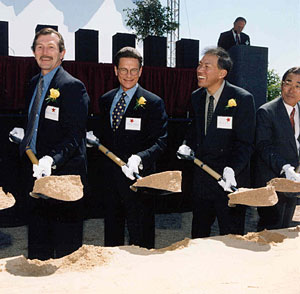 |
| The groundbreaking of the existing facility in 1996. |
The Texas site's room to grow represented a major plus, given Samsung's site-selection track record. Historically, the company has evidenced a strong preference for clustering manufacturing operations to gain economies of scale and cross-operational synergies. Samsung, for example, has a $33-billion Korean expansion underway that will create the world's largest semiconductor complex in the cities of Giheung and Hwaseong. Scheduled for completion in 2012, the multi-phase project south of Seoul will add eight production lines and an R&D center. All told, the expansion will cover a whopping 230 acres (92 hectares) and create 14,000 new Samsung jobs.
The size of the new Austin fab hasn't been announced. Samsung officials, however, say that the 300-mm. plant's footprint will at least triple the existing fab's 660,000 sq. ft. (61,314 sq. m.) of space.
The Austin site could easily accommodate that much square footage – and much more. Adding the 300-mm. fab on the Texas property would still leave a large expanse of open acreage.
Samsung Workers' Strong Track Record Gave Austin Another Edge
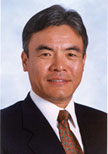 |
| Dr. H.K. Park, president of Samsung Austin Semiconductor. |
"The core reason [for picking the Texas site]," Cryer explains, "is that the company has a fab [here] that has been operating quite successfully for the last nine years." Samsung's Austin staff, he continued, "has been tested by the practical experience of running a semiconductor plant in the U.S. – using by and large U.S. engineers, but borrowing heavily from Korea – and working out the kinks."
Similarly, Samsung Austin Semiconductor President H.K. Park saluted current employees' contribution in landing the 300-mm. plant.
"Samsung Austin employees should be congratulated for their efforts in bringing this project to our location," Park said. "Their hard work, efficiency and dedication to making Samsung Austin a profitable, world-class manufacturing facility allowed this positive decision by the board."
Large Load of Texans Touches Down in Seoul
In retrospect, Austin recruiters clearly made a key move early on in Samsung's site search, gaining vital face time with the company's top execs. Unsurprisingly, numerous other U.S. sites were then busily working to win the huge Korean investment. Only Austin's team, though, decided to make its case in person at Samsung's Seoul headquarters.
And a lot of people made the trans-Pacific jaunt that ran from March 27 to April 1 of 2005. The broad-ranging team that deplaned in Seoul included current Austin Mayor Will Wynn; former mayor Kirk Watson; state Economic Development Director Jeff Moseley; Greater Austin Chamber of Commerce Economic Development Director Dave Porter; University of Texas Vice President of Research Juan Sanchez; businessman Gary Farmer; and lawyer Pike Powers.
Sending that large a delegation was a pricey proposition. The Austin Chamber of Commerce, however, made the trip possible, funding all expenses from Opportunity Austin, its economic development fund.
The Texas delegation left Seoul in high spirits. They felt they'd aced the case for Austin. None of them could've known, though, that an entire year would pass before Samsung would ink the final deal.
Samsung, Austin Start Talking Serious Turkey
That prompted Texas recruiters to gather during the next 16 weeks to hammer out a bid for what had now been fittingly codenamed "Project Sky." Other U.S. locations, however, had been
 |
| The New York vs. Texas semiconductor rivalry goes back a ways. In 2002, industry consortium Sematech expanded for the first time outside its headquarters in Austin, choosing Albany, N.Y., for a new US$403 million R&D center, located at the Center of Excellence in Nanoelectronics (pictured) at the University at Albany. |
"[Austin's incentives] were not as large as New York's package," Cryer explained. The Empire State, he continued, "was offering a greenfield site. The location was never that specific, but it was in upstate New York." (Luther Forest Technology Park in Malta and Stillwater, N.Y., was widely rumored to be the Empire State's site.)
Apparently, New York's incentives were much larger. The Empire State hasn't divulged its total offer. But unsubstantiated news leaked out putting the state's subsidy bid at more than $500 million.
Samsung also had some New York roots. Several years earlier, the Korean firm partnered in building a $1.9-billion, 300-millimeter wafer-chip manufacturing plant in East Fishkill, N.Y. Led by IBM, that consortium also includes Advanced Micro Devices, Charter Semiconductor, Infineon Technologies, Sony and Toshiba.
The Empire State's proposal also offered built-in speed. New York provides streamlined permitting for chip plants.
Governor, School Officials Come Together and Reason
Austin's efforts to satisfy that requirement hit a critical roadblock in the summer of 2005. Serious doubts arose over the sizable incentives in Austin's proposal from the Manor Independent School District. The whole recruiting process teetered.
Texas officials were already confident about the other Samsung subsidies. Both Austin and Travis County, for example, were firmly committed to each providing 20-year tax breaks worth $62.9 million and $44.7 million, respectively. And the Texas Enterprise Fund was set to pony up a $10.8-million cash grant.
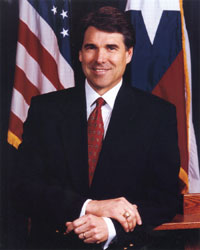 |
| Gov. Rick Perry |
Without the Manor schools' subsidies, though, Austin's bid was shaky. Those 10-year property tax breaks would be worth $115 million – more than half of the total proposed incentives.
The interpretation of a state law had stalled the Manor school subsidies. That statute defines the conditions under which state school districts can grant tax breaks to aid economic development projects.
Those legal specifics grew far fuzzier, however, during meetings of the Manor School Board, which wasn't familiar with the statute. Now, it was hearing two very different readings on what the law allowed – one from a school system consultant, another from the Samsung recruiting team. Those dueling interpretations created an impasse. The Manor School Board seemed stymied over how to proceed.
That was when Texas Gov. Rick Perry stepped in. Personal persuasion, he decided, might loosen the logjam. In August of 2005, Perry invited three board members and the school superintendent to the capitol. The group's discussion was private. "Sunshine laws" didn't apply, since not enough members were present to conduct any official business.
Whatever Perry said, though, apparently worked. In mid-September, the Manor School Board approved the Samsung subsidies.
Congestion Concerns Relieved, Samsung Puts Its Big Baby to Bed
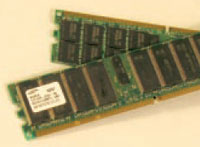 |
| One of the products the existing facility makes is high-speed memory for personal computers and servers. |
"[Samsung] looked at the transportation plans about 10 to 15 years out," including the planned public-private Texas Transport Corridor tollway, Cryer explains. "There was some interest in all the future transportation plans for the Austin area over the next 15 to 25 years."
What Samsung saw in Austin's infrastructure designs eased its concerns. And with that, the company's board decided to finally pull the project trigger, announcing that Austin had won the 300-mm. fab.
"Today's announcement," Perry said from the state capital, "is proof that Texas is a place where new technology investments take root and thrive." Fittingly, it was the process involving Samsung's previous expansion that had driven Perry and others to put together the Texas Enterprise Fund, a cash recruiting tool that has come in handy for several big projects ever since.
Austin has been one of the state's major high-tech hotspots. A year ago, for example, the city landed both Freescale Semiconductor's 600-employee headquarters and Advanced Micro Devices' consolidation of 2,000 employees in a new 825,000-sq.-ft. (76,643-sq.-m.) campus complex.
Other Austin business sectors have grown rapidly as well. At press time, for instance, Countrywide Financial Corp. was considering the city for a new corporate office employing 1,000 workers. The largest U.S. home mortgage lender already has more than 10,000 Texas employees.
Such major job-generators have made Austin a popular place. The metro's population of 1.45 million people represents an increase of more than 40 percent over the last 10 years.
For Austin's chip sector, though, it's been a very different story. Since its late 2000 peak, the city's chip-making and design work force has dropped from 25,000 to about 15,000. Samsung's new 300-mm. fab, in fact, will be the Central Texas area's first new chip fab to open since 1998 – and that, too, was a Samsung project.
Despite Costs, 300-MM. U.S. Fabs Keep Coming
 |
Like Texas, Virginia has two 300-mm. fabs: Micron Technology's operation in Manassas, Va. (where a $1.2-billion expansion is underway) and Infineon Technologies' plant in Richmond. (For more, read Site Selection's 2004 Semiconductor Industry Review.)
The granddaddy of the 300-mm. U.S. plants, though, is IBM's operation in East Fishkill, N.Y., announced back in late 2000. (East Fishkill is also home to the previously mentioned IBM-led 300-mm. operation in which Samsung is a partner.)
America's cutting-edge fabs have materialized despite Intel CEO Paul Otellini's pointed comments about the high costs of U.S. 300-mm. plants. Otellini told a congressional committee last year that building and operating a 300-mm. fab in the U.S. costs Intel $1 billion more over 10 years than at a comparable Asian or European site.
Nonetheless, the state-of-the-art chip projects have kept coming. Apparently, the U.S. market's size and importance are, at least for now, outweighing any cost concerns.
And who's America's biggest 300-mm. player? Ironically, it's Intel. The California-based chip king has three 300-mm. U.S. fabs, located in Chandler, Ariz.; Hillsboro, Ore.; and Rio Rancho, N.M. And it's building another.
Now Samsung has joined in the American influx, determined that it, too, will have a 300-mm. fab sitting on U.S. soil.
 PLEASE
VISIT OUR SPONSOR • CLICK ABOVE
PLEASE
VISIT OUR SPONSOR • CLICK ABOVE 
Site
Selection Online
©2006 Conway Data, Inc.
All rights reserved. Data is from many sources and is not warranted
to be accurate or current.